Potřebujeme váš souhlas k využití jednotlivých dat, aby se vám mimo jiné mohly ukazovat informace týkající se vašich zájmů. Souhlas udělíte kliknutím na tlačítko „OK“.
ASTM G82-98(2014)
Standard Guide for Development and Use of a Galvanic Series for Predicting Galvanic Corrosion Performance
Automaticky přeložený název:
Standardní Průvodce pro rozvoj a využití seriálu Galvanická pro předpovídání galvanické koroze Performance
NORMA vydána dne 1.5.2014
Informace o normě:
Označení normy: ASTM G82-98(2014)
Poznámka: NEPLATNÁ
Datum vydání normy: 1.5.2014
Kód zboží: NS-57840
Počet stran: 7
Přibližná hmotnost: 21 g (0.05 liber)
Země: Americká technická norma
Kategorie: Technické normy ASTM
Kategorie - podobné normy:
Anotace textu normy ASTM G82-98(2014) :
Keywords:
active, corrosion potential, galvanic corrosion, Galvanic Series, noble, passive, ICS Number Code 25.220.20 (Surface treatment),77.060 (Corrosion of metals)
Doplňující informace
| Significance and Use | ||||||||
|
4.1 When two dissimilar metals in electrical contact are exposed to a common electrolyte, one of the metals can undergo increased corrosion while the other can show decreased corrosion. This type of accelerated corrosion is referred to as galvanic corrosion. Because galvanic corrosion can occur at a high rate, it is important that a means be available to alert the user of products or equipment that involve the use of dissimilar metal combinations in an electrolyte of the possible effects of galvanic corrosion. 4.2 One method that is used to predict the effects of galvanic corrosion is to develop a galvanic series by arranging a list of the materials of interest in order of observed corrosion potentials in the environment and conditions of interest. The metal that will suffer increased corrosion in a galvanic couple in that environment can then be predicted from the relative position of the two metals in the series. 4.3 Types of Galvanic Series: 4.3.1 One type of Galvanic Series lists the metals of interest in order of their corrosion potentials, starting with the most active (electronegative) and proceeding in order to the most noble (electropositive). The potentials themselves (versus an appropriate reference half-cell) are listed so that the potential difference between metals in the series can be determined. This type of Galvanic Series has been put in graphical form as a series of bars displaying the range of potentials exhibited by the metal listed opposite each bar. Such a series is illustrated in 4.3.2 The second type of galvanic series is similar to the first in that it lists the metals of interest in order of their corrosion potentials. The actual potentials themselves are not specified, however. Thus, only the relative position of materials in the series is known and not the magnitude of their potential difference. Such a series is shown in 4.4 Use of a Galvanic Series: 4.4.1 Generally, upon coupling two metals in the Galvanic Series, the more active (electronegative) metal will have a tendency to undergo increased corrosion while the more noble (electropositive) metal will have a tendency to undergo reduced corrosion. 4.4.2 Usually, the further apart two metals are in the series, and thus the greater the potential difference between them, the greater is the driving force for galvanic corrosion. All other factors being equal, and subject to the precautions in Section 5, this increased driving force frequently, although not always, results in a greater degree of galvanic corrosion. |
||||||||
| 1. Scope | ||||||||
|
1.1 This guide covers the development of a galvanic series and its subsequent use as a method of predicting the effect that one metal can have upon another metal can when they are in electrical contact while immersed in an electrolyte. Suggestions for avoiding known pitfalls are included. 1.2 The values stated in SI units are to be regarded as standard. No other units of measurement are included in this standard. 1.3 This standard does not
purport to address all of the safety concerns, if any, associated
with its use. It is the responsibility of the user of this standard
to establish appropriate safety and health practices and determine
the applicability of regulatory limitations prior to use.
Standard Terminology Relating to
Corrosion and Corrosion Testing (Withdrawn 2010) Standard Practice for Conventions
Applicable to Electrochemical Measurements in Corrosion Testing Standard Guide for Applying Statistics to
Analysis of Corrosion Data Standard Guide for Conducting and
Evaluating Galvanic Corrosion Tests in Electrolytes |
Podobné normy:
Historická
1.4.2011
Historická
15.6.2014
Historická
1.7.2014
Historická
1.6.2011
Historická
1.12.2009
Historická
1.6.2012
Doporučujeme:
Aktualizace zákonů
Chcete mít jistotu o platnosti užívaných předpisů?
Nabízíme Vám řešení, abyste mohli používat stále platné (aktuální) legislativní předpisy.
Chcete vědět více informací? Podívejte se na tuto stránku.


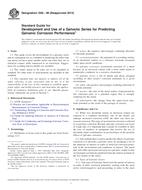
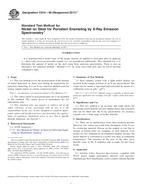 ASTM C810-90(2011)e1..
ASTM C810-90(2011)e1..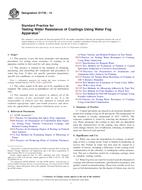 ASTM D1735-14
ASTM D1735-14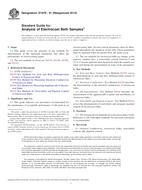 ASTM D1978-91(2014)..
ASTM D1978-91(2014)..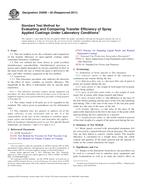 ASTM D5009-02(2011)..
ASTM D5009-02(2011)..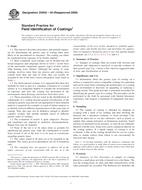 ASTM D5043-04(2009)..
ASTM D5043-04(2009)..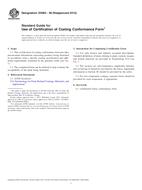 ASTM D5063-90(2012)..
ASTM D5063-90(2012)..
 Cookies
Cookies
